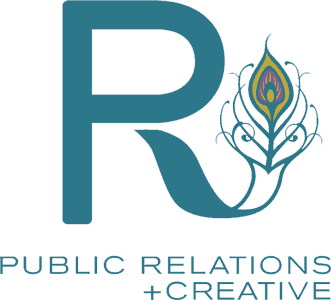PR trends
When to Bring in the Pros: Signs It's Time to Hire a PR Firm
In the ever-evolving business landscape, navigating the intricacies of public relations (PR) is crucial for success. While many companies attempt to manage their PR efforts in-house, there often comes a point where the expertise and resources of a dedicated PR firm are indispensable. Recognizing the signs indicating the necessity to hire a PR firm can be the pivotal step towards achieving your business goals and maintaining a positive brand image. Let's explore some of these signs in detail.

Limited Brand Visibility
Is your brand struggling to gain visibility in the market despite your best efforts? This could be a clear indication that it's time to hire a PR firm. PR professionals specialize in enhancing brand visibility through strategic campaigns, media outreach, and targeted messaging. By leveraging their expertise, you can significantly amplify your brand's presence and reach your target audience more effectively.

Crisis Management Challenges
Every business faces challenges and crises at some point, whether it's a negative review, a product recall, or a PR scandal. Handling these situations with finesse and professionalism is crucial to protecting your brand's reputation. A PR firm has the experience and skills necessary to navigate crises efficiently, minimize damage, and restore public trust. Their swift action and strategic communication can make all the difference in how your brand emerges from challenging situations.
Lack of Media Relationships
Building and maintaining relationships with journalists, bloggers, and influencers is essential for securing media coverage and positive publicity. If your company lacks these connections or struggles to garner media attention, it's a sign that you could benefit from hiring a PR firm. PR professionals have established networks and know-how to pitch stories effectively, increasing your chances of getting featured in relevant publications and reaching a broader audience.
Ineffective Communication Strategies
Effective communication is the cornerstone of successful PR campaigns. If your current communication strategies are falling short or failing to resonate with your target audience, it may be time to bring in external expertise. A PR firm can assess your existing strategies, identify areas for improvement, and develop tailored communication plans that align with your brand's objectives. Whether it's crafting compelling press releases, managing social media channels, or coordinating events, PR professionals can help you communicate your message more effectively.
Stagnant Growth:
Are you experiencing stagnant growth or struggling to achieve your business objectives despite your best efforts? A lack of strategic PR initiatives could be holding your company back. Hiring a PR firm can inject fresh ideas, innovation, and momentum into your marketing efforts, driving growth and achieving tangible results. From launching new products to repositioning your brand in the market, PR professionals can provide the strategic guidance and support needed to propel your business forward.

Overwhelmed Internal Resources
Managing PR activities alongside day-to-day business operations can be overwhelming, especially for small and medium-sized enterprises (SMEs) with limited resources. If your internal team is stretched thin or lacks the expertise to handle PR effectively, outsourcing to a PR firm can offer much-needed relief. By delegating PR responsibilities to professionals who specialize in the field, you can free up your team's time and focus on core business activities while still reaping the benefits of a comprehensive PR strategy.
Competitive Pressures
In today's competitive marketplace, staying ahead of the competition requires proactive PR efforts that differentiate your brand and capture consumer attention. If you find your competitors consistently outperforming you in terms of media coverage, brand reputation, or market share, it may be time to level the playing field by hiring a PR firm. With their strategic insights and creative approach, PR professionals can help you stand out from the crowd and gain a competitive edge in your industry.
Recognizing the signs that it's time to hire a PR firm is essential for any business looking to enhance its brand visibility, manage crises effectively, and achieve its growth objectives. Whether you're struggling with limited resources, stagnant growth, or ineffective communication strategies, outsourcing your PR efforts to a dedicated firm can provide the expertise, support, and results you need to succeed in today's competitive market. Don't wait until it's too late — invest in hiring a PR firm and take your brand to new heights. Our experienced team would love to help you do just that. To learn more, schedule a free consultation with RPR Firm today.
Event Management in PR: Orchestrating Memorable Experiences to Amplify Brand Messaging
In the fast-paced world of public relations (PR), creating meaningful connections between brands and their audiences is essential. While digital communication channels have expanded our reach, the value of face-to-face interactions remains unmatched. This is where event management in PR shines brightly, serving as a powerful tool to craft unforgettable experiences that amplify brand messaging and foster deeper engagement.
At the heart of every successful PR event lies meticulous planning and execution. From product launches to press conferences and galas to trade shows, each occasion presents a unique opportunity to captivate audiences and leave a lasting impression. It's not just about hosting an event; it's about curating an experience that resonates with attendees on a personal level, evoking emotions that transcend the event itself.
The Balance of Event Management
Elite public relations agencies understand the intricate dance between creativity and strategy inherent in event management. They recognize that every detail, from venue selection to guest list curation, contributes to the overall narrative of the brand. By seamlessly integrating PR objectives with event logistics, these agencies elevate ordinary gatherings into extraordinary showcases of brand identity and values.
One of the key advantages of PR events is their ability to generate buzz and media coverage. A well-crafted event has the potential to garner attention from journalists, influencers, and industry insiders, amplifying the brand's message far beyond the confines of the venue. Whether it's a product unveiling that sparks curiosity or a charity gala that tugs at heartstrings, PR events have the power to ignite conversations and shape public perception.

However, orchestrating a successful PR event requires more than just throwing a party. It demands a strategic approach that begins long before the first guest arrives and extends well after the last one leaves. It starts with a clear understanding of the brand's objectives and target audience, followed by meticulous planning to ensure that every aspect of the event aligns with these goals.
From selecting the perfect venue to coordinating with vendors and managing RSVPs, event management in PR requires a delicate balance of creativity, organization, and attention to detail. It's about creating an immersive experience that captivates all five senses, leaving attendees with memories they'll cherish long after the event concludes.
Make a Connection and Make It Last
Moreover, PR events offer a valuable opportunity for brands to humanize their image and connect with their audience on a personal level. In an era dominated by digital interactions, face-to-face encounters provide a rare chance for genuine engagement. Whether it's through interactive workshops, networking opportunities, or intimate gatherings, PR events allow brands to forge meaningful relationships with their stakeholders.
In the age of social media, the impact of PR events extends far beyond the physical realm. Platforms like Instagram, Twitter, and LinkedIn serve as virtual stages where attendees can share their experiences in real-time, amplifying the brand's message to a global audience. By leveraging social media before, during, and after the event, PR agencies can extend the reach and longevity of their campaigns, maximizing ROI and brand exposure.

Use Each Event to Earn Trust
Furthermore, PR events provide a platform for brands to showcase their thought leadership and industry expertise. Whether it's through panel discussions, keynote speeches, or experiential activations, events offer a captive audience eager to learn and engage. By positioning themselves as authorities in their respective fields, brands can strengthen their credibility and influence, earning the trust and loyalty of consumers and stakeholders alike.
Event management plays a crucial role in the realm of public relations, serving as a powerful tool to amplify brand messaging and foster deeper connections with audiences. From meticulously planning every detail to leveraging social media for maximum impact, PR events offer a unique opportunity to create memorable experiences that leave a lasting impression. As elite public relations agencies continue to push the boundaries of creativity and innovation, the future of event management in PR looks brighter than ever before.
Building Trust Through Transparency: The Role of PR in Corporate Communication
Trust is the cornerstone of successful relationships, whether personal or professional. Nowhere is this more evident than in the realm of corporate communication, where public relations (PR) plays a pivotal role in fostering trust through transparency. In an era where consumers demand authenticity and accountability from the brands they engage with, companies must prioritize transparency in their corporate communication strategies to build and maintain trust. Let's delve into why transparency matters, how corporate communications facilitate it, and the pivotal role of PR in corporate communication, exploring its significance, strategies, and impact.
Why Transparency Matters
Transparency is the bedrock of trust in any relationship, and the corporate world is no exception. When companies are transparent, they openly share information about their operations, policies, decisions, and performance. This openness breeds confidence among stakeholders, including customers, employees, investors, and the wider community. Conversely, opacity breeds suspicion and erodes trust, leading to reputational damage and loss of credibility.

As information flows freely and swiftly, consumers have become more discerning. They seek authenticity and honesty from the brands they support. They expect companies to be forthcoming about their practices, values, and impact on society and the environment. Failure to meet these expectations can result in public backlash, boycotts, and long-term damage to the brand's reputation.
Understanding Corporate Communication
Before delving into the role of PR, let's decipher the essence of corporate communication. Essentially, corporate communication encompasses the transmission of information, internally and externally, within an organization. It encompasses various channels, including media relations, investor relations, employee communication, and crisis management. Effective corporate communication fosters transparency, enhancing the brand reputation and cultivating not only stakeholder trust, but also the trust of the public at large.
The Nexus between PR and Corporate Communication
At the nexus of corporate communication lies public relations, serving as its chief architect and advocate. PR functions as the strategic guardian of a company's image, ensuring alignment between organizational objectives and communication initiatives. Through astute messaging and engagement tactics, PR professionals navigate the intricate terrain of media, public perception, and stakeholder relations.
Strategic Messaging and Brand Positioning
Central to PR's role in corporate communication is crafting strategic messaging that resonates with target audiences. By articulating compelling narratives and key messages, PR professionals shape the perception of a company, reinforcing its brand identity and values. Whether through press releases, speeches, or social media campaigns, PR ensures that corporate messaging remains consistent, coherent, and impactful.

Media Relations and Reputation Management
In an era of digital ubiquity, media relations form a cornerstone of corporate communication. PR professionals liaise with journalists, bloggers, and influencers to secure positive media coverage and manage reputational risks. Through proactive media outreach and rapid response strategies, PR mitigates crises, counters negative narratives, and safeguards the brand's integrity.
Employee Engagement and Internal Communication
Effective corporate communication extends beyond external stakeholders to encompass internal audiences, notably employees. PR plays a pivotal role in fostering employee engagement, aligning workforce perceptions with organizational goals. Through town halls, newsletters, and intranet platforms, PR cultivates a culture of transparency, empowerment, and collaboration within the company.
Crisis Communication and Issue Management
In the face of crises or controversies, PR emerges as the frontline defender of corporate reputation. Through swift and strategic crisis communication, PR professionals navigate turbulent waters, offering transparency, empathy, and solutions. By crafting crisis response plans, conducting media training, and monitoring online sentiment, PR minimizes reputational damage and restores stakeholder confidence.
Measuring Impact and Driving Results
As in all areas of business, measurement is paramount. PR employs a myriad of metrics, from media impressions to sentiment analysis, to gauge the efficacy of communication efforts. By analyzing data and insights, PR professionals glean actionable intelligence which enable them to refine strategies and optimize outcomes. Whether through surveys, focus groups, or social media analytics, PR demonstrates its value by driving tangible results and ROI.
The Evolution of PR in the Digital Age
With the advent of digital technologies, PR has undergone a profound evolution, reshaping the landscape of corporate communication. Social media platforms, online forums, and digital influencers have democratized information dissemination, amplifying the reach and impact of PR initiatives. Today, PR professionals harness the power of data analytics, AI-driven insights, and immersive storytelling to engage audiences in real-time across diverse channels.
The Imperative of PR in Corporate Communication
In the tapestry of corporate communication, public relations emerges as a linchpin, weaving together narratives, relationships, and perceptions. Through strategic messaging, media relations, and crisis communication, PR shapes the narrative of corporate communications, elevating a brand’s reputation and fostering stakeholder trust. As businesses navigate an increasingly complex and interconnected world, the role of PR in corporate communication becomes ever more indispensable. By embracing innovation, agility, and authenticity, PR professionals pave the way for enduring success in the digital age.
Owned Media Metrics That Matter: Measuring Success in PR Campaigns
In the dynamic landscape of public relations, the metrics used to gauge success have evolved significantly. With the advent of digital media and the proliferation of owned media channels, PR professionals now have an array of metrics at their disposal to measure the effectiveness of their campaigns. In this blog, we'll delve into the owned media metrics that truly matter when evaluating the success of PR campaigns.
Understanding Owned Media
Owned media refers to the channels that a company or organization controls and utilizes to distribute content and engage with its audience. This includes company websites, blogs, social media profiles, email newsletters, and other digital assets. Unlike earned or paid media, it provides brands with complete control over messaging and distribution.

Key Metrics for Owned Media
1. Website Traffic and Engagement
The cornerstone of owned media measurement is website traffic and engagement metrics. Tracking metrics such as unique visitors, page views, time spent on site, and bounce rate provides insights into how effectively your media channels are attracting and retaining audiences. Tools like Google Analytics offer comprehensive data on website performance, allowing PR professionals to assess the impact of their content and messaging.
2. Content Consumption Metrics
Beyond website traffic, it's essential to analyze how audiences are engaging with specific content. Metrics such as the number of blog post views, video watch time, and document downloads offer valuable insights into the effectiveness of your content strategy. By identifying which types of content resonate most with your audience, PR professionals can refine their messaging and optimize future campaigns.
3. Social Media Metrics:
Social media platforms play a pivotal role in owned media strategy, serving as channels for content distribution and audience engagement. Metrics such as likes, shares, comments, and follower growth are indicative of social media performance. Additionally, tracking click-through rates (CTRs) on social media posts provides insights into audience behavior and the effectiveness of call-to-action (CTA) strategies.

4. Email Marketing Metrics:
Email newsletters remain a powerful owned media tool for building and nurturing customer relationships. Metrics such as open rates, click-through rates, and unsubscribe rates offer essential insights into email campaign performance. By segmenting audiences and analyzing engagement metrics, PR professionals can tailor content to specific audience interests and preferences.
5. Search Engine Optimization (SEO) Metrics:
Optimizing owned media content for search engines is crucial for maximizing visibility and organic traffic. Metrics such as keyword rankings, organic search traffic, and backlink profiles provide insights into SEO performance. By continuously monitoring and optimizing SEO metrics, PR professionals can improve the discoverability of their content and drive targeted traffic to owned media channels.
6. Conversion Metrics:
Ultimately, the goal of these media campaigns is to drive desired actions from the audience, whether it's making a purchase, signing up for a newsletter, or downloading a resource. Conversion metrics such as conversion rate, lead generation, and sales attribution are key indicators of campaign success. By tracking conversion metrics alongside engagement metrics, PR professionals can assess the impact of their owned media efforts on business objectives.
Best Practices for Measuring Owned Media Success
Set Clear Objectives:
Before launching a PR campaign, define clear and measurable objectives that align with overall business goals. Whether it's increasing website traffic, generating leads, or driving sales, establishing specific KPIs will guide measurement efforts and ensure accountability.
Use a Balanced Scorecard Approach:
Instead of focusing solely on vanity metrics such as likes and followers, adopt a balanced scorecard approach that incorporates a mix of quantitative and qualitative metrics. By considering metrics related to reach, engagement, conversion, and sentiment, PR professionals can gain a holistic view of campaign performance.

Track Metrics Consistently:
Consistent tracking and monitoring of metrics are essential for identifying trends and measuring progress over time. Establish regular reporting cadences and leverage analytics tools to automate data collection and analysis processes.
Benchmark Against Competitors:
Compare owned media metrics against industry benchmarks and competitors to gain insights into performance relative to peers. Identifying areas of strength and opportunity can inform strategic adjustments and competitive positioning.
In today's digital age, owned media has emerged as a cornerstone of PR strategy, offering brands unprecedented control over content creation and distribution. By leveraging the right metrics and measurement practices, PR professionals can effectively evaluate the success of their owned media campaigns and drive tangible business outcomes. From website traffic and engagement to social media metrics and conversion rates, the key to measuring owned media success lies in adopting a comprehensive and data-driven approach that aligns with overarching business objectives.
From Quiet Days to Headline Plays: PR Professionals’ Tactics for Generating News
In public relations (PR), staying visible and engaging with your audience is crucial, even more so when there seems to be no newsworthy content to share. PR professionals face the unique challenge of generating interest and news in these slow times. Here are several innovative strategies that PR professionals can use to create buzz and maintain their presence in the media landscape, ensuring that their brand or client remains in the public eye, regardless of the news cycle.
Leverage Social Media
Social media platforms offer a fertile ground for PR professionals to generate news when traditional avenues seem barren. Engaging directly with your audience through these channels can transform a slow news day into an opportunity for meaningful interaction.
Consider sharing behind-the-scenes glimpses of your company or client's daily operations, highlighting the human element behind the brand. Initiating live Q&A sessions on platforms like Instagram or Facebook can also drive engagement, allowing you to address audience queries in real-time and showcase your brand's transparency and accessibility.
You can also make current news relevant to your brand. Look for opportunities to share your brand's story within a hot news story. You can capitalize on current events to make a great story that establishes your brand’s value to a mainstream audience. By crafting compelling, interactive content, PR professionals can create their news, keeping the audience engaged and interested even in the absence of conventional news stories.
Create Your Own Events

In the absence of newsworthy happenings, creating your own events can be a game-changer for PR professionals. Organizing webinars, workshops, or virtual meet-ups generates content and positions your brand as a leader in industry conversations. Consider partnering with other brands, influencers, or thought leaders to co-host events, expanding your reach and introducing your audience to fresh perspectives.
These collaborations can lead to newsworthy moments, capturing the attention of media outlets and audiences alike. The buzz created by these events fills the news void and enhances your brand's reputation for innovation and engagement. Highlighting the success stories or key learnings from these events in follow-up communications can keep the momentum going, ensuring your brand remains in the spotlight.
Conduct and Publish Original Research
Original research is a powerful tool for PR professionals seeking to generate news. By conducting studies or surveys relevant to your industry, you can uncover insights that interest your target audience and establish your brand as an authority. This approach requires a commitment to quality and relevance, ensuring the findings offer genuine value. Publishing this research with insightful analysis and conclusions can attract significant media attention.
To maximize reach, consider creating a multi-faceted content campaign around your research findings, including press releases, blog posts, podcasts, and social media content. This amplifies your message and caters to different audience preferences, enhancing engagement and shareability. Original research can set your brand apart, making it a go-to source for insights and elevating your standing in the industry.
PR Professionals Can Create Content

Effective content marketing is crucial for PR professionals who generate news in slow periods. You can maintain visibility and interest by developing engaging, high-quality content that resonates with your audience. This could range from informative blog posts and visually appealing infographics to compelling video series. Incorporating SEO strategies can further enhance the visibility of your content, drawing more traffic to your site. Content marketing helps fill the news void and strengthens your brand's relationship with its audience, establishing a foundation of trust and authority.
Generating news in the absence of newsworthy events is a testament to the creativity and proactivity of PR professionals. By leveraging social media, creating their own events, conducting original research, and utilizing content marketing, PR professionals can ensure their brand or client remains in the public eye. These strategies help navigate slow news periods and strengthen the overall PR strategy, building a more engaged and loyal audience. In the ever-evolving media landscape, staying visible and relevant requires constant innovation. And these tactics offer a roadmap for PR professionals to shine, even when the news seems scarce.
RPR Firm has a team of PR professionals with the skills and experience to help you generate news when there is no news. With more than 11 years of experience, our company helps brands share their stories with cutting-edge technology and tools. To learn more, schedule a free consultation with us today.
Building Rapport Through Follow-Up: Relationship-Oriented Approaches With Reporters
In the world of public relations (PR), establishing and maintaining strong relationships with reporters is paramount. Beyond merely pitching stories, the art of building rapport through thoughtful follow-up can transform one-time interactions into lasting partnerships. This article explores relationship-oriented approaches to follow-up, offering practical strategies to enhance engagement with reporters. By understanding their needs, personalizing communication, and maintaining professionalism, PR professionals can navigate the delicate balance between persistence and respect, ultimately fostering more meaningful connections.
Build Rapport by Understanding Reporters' Needs
A deep understanding of reporters' needs is central to any effective PR strategy. This begins with thorough research into their beats, recent articles, and expressed interests. Knowing what a reporter covers, their style, and what they value in a story enables PR professionals to tailor their pitches and follow-ups with precision.
It’s not just about pushing a narrative but aligning your message with the reporter's interests to provide genuine value. This relevance is key to capturing their attention and setting the stage for a productive relationship. Furthermore, demonstrating awareness of their work and showing appreciation for their coverage can make follow-ups more personal and impactful, establishing a foundation of respect and mutual benefit from the outset.
Use Effective Follow-Up Strategies

Timing is everything in follow-up communication. For instance, waiting a week after the initial pitch strikes a balance between giving reporters enough time to consider your story and showing your eagerness to collaborate. The frequency of follow-ups should also be moderated; persistence is crucial, but it should never cross into the realm of annoyance. Personalization in follow-ups demonstrates a genuine interest in building a relationship beyond the transactional. Mentioning specific details from the reporter's work, suggesting how your story could fit into their narrative, or providing additional information that might interest them are ways to show you're paying attention and value their work.
Equally important is offering resources or expertise that can assist in their reporting, whether it's access to sources, detailed reports, or exclusive insights. This helps make your pitch more appealing and positions you as a valuable resource for future stories. Follow-up communications should always respect the reporter's time and preferences, emphasizing brevity and relevance to keep their interest piqued.
Maintain Professionalism to Build Rapport

Professionalism in follow-ups is non-negotiable. This includes respecting the reporter's boundaries, such as their preferred communication method and time. Being clear, concise, and to the point in your communications respects their busy schedules and increases the likelihood of your message being well-received. Acknowledging and adapting to feedback about your pitches or the frequency of your follow-ups can also go a long way in maintaining a positive, professional relationship. This respect for their profession and process underscores your commitment to a partnership rather than a purely transactional interaction.
Leverage Social Media for Engagement
Social media offers an invaluable platform for engaging with reporters in a less formal, more dynamic way. Following their professional accounts, sharing their work, and engaging with their content can foster rapport and keep you on their radar between pitches. This engagement should be thoughtful and genuine, contributing to the conversation meaningfully rather than merely promoting your agenda. Commenting on articles, offering insights, and sharing relevant information can demonstrate your interest in their work and your expertise in your field, further solidifying your relationship.
Social media engagement also allows for real-time interaction, offering immediacy that emails or calls cannot. This immediacy can be particularly beneficial when responding to their queries for sources or insights on breaking news, further cementing your role as a valuable contact. However, it's crucial to balance enthusiasm with professionalism, ensuring that your interactions always respect their boundaries and the professional nature of your relationship. By leveraging social media wisely, PR professionals can nurture a rapport with reporters that is both respectful and productive, setting the stage for successful collaborations.
Building rapport with reporters through strategic follow-up is both an art and a science. By understanding their needs, personalizing your approach, maintaining professionalism, and engaging on social media, you can cultivate lasting relationships that benefit your clients and the media. Adopting a relationship-oriented approach is vital to successful PR.
If you want to learn more about building rapport with reporters, we can help. Reach out to the RPR team for more information.
Mastering Media Pitching Etiquette
Hands down, one of the most integral parts of successful public relations is effective media pitching. The potential value of these types of media relationships is vast. And if done right, proper media coverage can significantly increase your visibility and raise awareness for your brand, product, or cause.
In today's competitive PR and media landscape, standing out from the crowd is more important than ever. The best way to start making noise? Craft a media strategy that allows you to differentiate yourself from competitors. A carefully crafted narrative can inspire action and engagement from your audience. Media coverage can spark meaningful interactions with your brand, whether by driving website traffic, generating leads, or encouraging social media shares.
People tend to trust information they see in the media more than other sources. Securing coverage in reputable media outlets can enhance brand credibility and build trust among a new customer base. It's like getting a stamp of approval from a trusted third party. Media coverage also allows you to position yourself or your organization as a thought leader in your industry. You can demonstrate your expertise and influence within your field by offering expert insights or commentary on relevant topics.
When you successfully pitch a story to the media, you're tapping into their platform and reaching their audience, which can be much larger than your own. The potential for impressions is massive. Effective media pitching requires a targeted approach that ensures your message reaches the right people.
5 Tips for Mastering Media Pitching Etiquette
Here are five tips for mastering media pitching etiquette.
1. Personalize your pitches to each journalist and their beat
Journalists receive countless pitches daily, so standing out is essential. Show that you've done your homework and value their expertise of their beat. Tailor your pitch by everything from your tone of voice to how and when you reach out and through what medium. Some of this intel is available online, but some will need to be gleaned through trial and error. Get to know friendly journalists' communication preferences by scheduling an intro call with them or asking directly. Demonstrating this level of care fosters better relationships with journalists, leading to more organic coverage opportunities in the future.
2. Follow up respectfully
Allowing journalists ample time to review your pitch is crucial for effective media pitching. Patience is key, so plan accordingly and schedule deadlines considering this waiting period. By giving them at least a week to consider your pitch, you demonstrate professionalism and respect for their busy schedules. This approach increases the likelihood of your pitch being noticed and considered and helps build positive relationships with journalists for future opportunities.
3. Don’t be afraid to make a phone call

Don’t underestimate the power of a phone call in media pitching. It allows for direct, personal engagement and can help clarify your pitch or address any concerns in real-time. Plus, it shows initiative and commitment to your story. Don’t overstep boundaries, but don’t be afraid to pick up the phone, especially when first trying to build these contacts and a reputation in the scene!
4. Do some of the legwork
Doing the legwork for journalists is a great way to improve your results. Make it almost impossible for journalists to turn your story away. Offer exclusives, provide all necessary information, grant access to sources, and attach visuals upfront. Anticipate their needs and tailor your pitch to fit their style and audience.
Journalists are always busy and overworked. Make their lives easy — delivering a well-packaged story ready for publication increases the likelihood of coverage and builds trust with journalists. Even if they are looking for something slightly different, there's a chance they’ll still use your story pitch out of convenience. Remember, the easier you make it for them, the more likely they will say yes!
5. Build professional relationships

Building symbiotic professional relationships is essential in effective media outreach. By fostering mutually beneficial relationships, you become a trusted resource for journalists, making them more receptive to your pitches. Plus, maintaining positive relationships ensures ongoing opportunities for coverage and collaboration. Remember, it's not just a transaction — it's about nurturing connections built on trust and respect for long-term success in PR.
Get Started with Media Pitching
Effective media pitching can significantly impact your brand's reputation, visibility, and bottom line. Craft compelling stories, build relationships with journalists, and target the right media outlets. Maximizing your chances of success is all about mastering the etiquette. For help with your media pitching, contact R Public Relations Firm today.
From PR Crisis to Confidence: The Role of Positive Messaging in Rebuilding Trust
In the ever-changing landscape of public relations, a crisis can strike a business at any moment, leaving a brand's reputation hanging in the balance. The aftermath of such situations often leaves a deep dent in the trust that customers, investors, and the general public place in a brand. In these critical moments, the path to redemption is paved with more than just apologies or public statements. It involves a strategic, heartfelt effort to rebuild trust through positive messaging. Here’s how brands can effectively navigate the choppy waters of a PR crisis and emerge stronger, using the power of positive communication.
Understanding the Impact of a PR Crisis

When a PR crisis hits, its impact is immediate and far-reaching. For a brand, the first blow is often to its public image; the carefully curated perception held by its audience can shatter in an instant. Customers, once loyal, may now question their choices, while potential clients might seek alternatives. This erosion of trust doesn't just affect sales or partnerships; it can ripple through every aspect of the business, from employee morale to investor confidence.
The long-term implications are even more daunting. With a swift and effective response, a brand can avoid a permanent scar on its reputation, leading to a steady decline in market presence and relevance. Understanding the severity of these consequences is the first step towards crafting a response strategy that addresses the immediate fallout and lays a foundation for rebuilding and strengthening the damaged trust.
The Foundation of Trust Rebuilding
The unwavering commitment to transparency and honesty is at the heart of rebuilding trust. In the wake of a PR crisis, a brand's first action should be an open acknowledgment of the situation. This includes taking full responsibility rather than deflecting blame or minimizing the issue.
Equally important is showing genuine empathy. Brands need to demonstrate that they understand and care about the impact of the crisis on their stakeholders. This empathetic approach should not be viewed as a one-off statement but as a vital, consistent theme in all communications following the crisis. It's about weaving empathy into the fabric of every message, ensuring that each statement, response, and action the brand takes resonates with understanding and sensitivity. This is not just about what is said but also how it is said. The tone, the choice of words, and the manner of delivery all play a crucial role in demonstrating empathy.
Moreover, this foundation of transparency, responsibility, and empathy sets a decisive stage for effective positive messaging. It signals to the audience that the brand's intentions go beyond mere damage control. It's about genuinely acknowledging the issue and showing a proactive commitment to making amends and improving. This approach helps transform the narrative from fault and failure to learning, growth, and genuine commitment to doing better.
Strategies for Positive Messaging

When it comes to positive messaging, the content and tone of the communication are crucial. Here are some strategies:
Forward-Looking Optimism
Messages should focus on the future and how the brand is taking steps to prevent similar issues. This includes concrete plans, policy changes, or initiatives demonstrating commitment to improvement.
Consistency in Communication
Consistent messaging across all channels ensures the brand speaks with one voice, reinforcing trust and credibility.
Engaging Stakeholders
Involve customers, employees, and partners in the recovery process. Solicit feedback, listen to concerns, and actively show that the brand values their input.
Highlighting Positive Actions
Share stories and examples of positive actions taken post-crisis. This could be community support initiatives, enhanced customer service efforts, or internal reforms.
Educational Content
Provide content that educates the audience about the steps taken, the reasons behind them, and how these contribute to a better future for all stakeholders.
Regular Updates
Keep stakeholders informed about progress and developments. This ongoing communication can help rebuild trust over time.
By integrating these strategies, a brand can craft messages that address the crisis and turn the narrative into one of growth and resilience.
Maintaining the Momentum after a PR crisis

Rebuilding trust is not a one-time effort; it requires ongoing commitment and action. To maintain the momentum, brands should regularly engage with their audience through various channels, social media, email newsletters, or community events. This continued engagement helps to keep the conversation around the brand positive and forward-looking. Additionally, brands should consistently monitor public sentiment and be ready to address any concerns or feedback proactively. This approach shows that the brand is not just reactive during a crisis but is actively involved in fostering a positive relationship with its stakeholders.
Navigating a PR crisis and rebuilding trust is undeniably challenging, but it's also an opportunity for growth and strengthening relationships with stakeholders. By focusing on transparent, empathetic, and positive messaging, brands can turn a crisis into a catalyst for improvement. The art of redemption lies in how effectively a brand communicates its commitment to change and its dedication to its audience. Embracing this art can restore lost trust and lead to a more robust and respected brand image in the long run.
PR Trends: What’s In and What’s Out for 2024
In the fast-paced world of public relations (PR), staying ahead of the curve isn't just an advantage; it's a necessity. As we embrace 2024, the PR landscape is undergoing a seismic shift, influenced by rapid technological advancements and evolving consumer behaviors. For businesses and brands, understanding which trends are ascending and which are declining is crucial for maintaining relevance and effectiveness. In this insightful exploration, we'll delve into the top PR trends to watch in 2024, pairing each emerging trend with a fading one to provide a clear perspective on the evolving PR world.
The Rise of Micro-Influencers Versus Celebrity Endorsements

IN: Micro-Influencers in PR
In 2024, the PR spotlight shines on micro-influencers. These individuals, though they may have smaller followings, wield significant influence within their specific niches. Their power lies in their authenticity and high engagement rates. PR campaigns are increasingly leveraging these micro-influencers for their ability to foster deep, genuine connections with their audiences, making them invaluable for brands targeting specific demographics or interests.
OUT: Celebrity-Only Endorsements
The era of depending exclusively on celebrity influencers is waning. While celebrities still hold sway, their impact is often diluted due to their broad and diverse followings. Brands recognize that the sheer size of a celebrity's following doesn't guarantee meaningful engagement, leading to a shift towards more relatable and niche-focused micro-influencers.
New PR Trend for 2024: The Rise of Data-Driven Strategies

IN: Data-Driven PR
Data is the new cornerstone of PR strategies in 2024. Using advanced analytics tools, PR professionals can track campaign performance, understand audience behaviors, and measure message impact precisely. This approach allows for informed decision-making, enhancing the effectiveness of campaigns and enabling the prediction of future PR trends.
OUT: Guesswork and Intuition
The days of basing PR decisions on guesswork or gut feeling are fading. While intuition still plays a role, it's no longer the primary driver in PR strategy development. Data-driven insights replace hunches, leading to more targeted and successful PR campaigns.
The Rise of Video Content as a PR Trend in 2024

IN: Video Content in PR
In 2024, there will be a continued rise in the dominance of video content in the digital PR space. The power of video lies in its ability to convey messages through dynamic and engaging visual storytelling. Brands increasingly incorporate video into their PR strategies, utilizing various formats like behind-the-scenes clips, product demonstrations, and narrative-driven pieces to capture and retain audience attention.
OUT: Text-Dominant Content
The overemphasis on text-based content is becoming a thing of the past. While written content still holds importance, it's no longer the sole focus. The shift towards visually engaging content, especially video, is evident, as it often resonates more effectively with modern audiences.
Podcasts as a PR Medium Versus Traditional Media
IN: Podcasts in PR
In 2024, podcasts have become a crucial medium in the PR arsenal. Podcasts offer a unique blend of depth and personal connection, allowing for in-depth discussions, interviews, and storytelling that traditional media formats often can't match. By featuring industry-relevant podcasts or even starting their own, brands can establish thought leadership and build a loyal audience base.
OUT: Traditional Media Reliance
The overreliance on traditional media formats such as print and TV is declining. While these mediums still play a role, the increasing preference for digital content that audiences can consume on their own terms — like podcasts — is reshaping the PR landscape.
Agile and Adaptive PR Strategies Versus Rigid, Long-Term Campaign Planning

IN: Agile PR Strategies
Adaptability and agility define PR in 2024. PR strategies, recognizing the fast-paced and often unpredictable nature of the digital world, now emphasize flexibility and the ability to pivot quickly. This agile approach allows brands to respond promptly to market changes, consumer trends, and global events, ensuring their messaging remains relevant and impactful.
OUT: Rigid Campaign Planning
Gone are the days when PR campaigns were set in stone months in advance. The rapidly changing digital landscape has rendered such rigid, long-term planning less effective. In its place, a more dynamic and responsive approach to PR strategy has emerged, prioritizing real-time adjustments over set-in-stone plans.
Today’s PR trends, from the rise of podcasts and micro-influencers to agile and data-driven strategies, are shaping a new future for public relations. Conversely, we're witnessing the decline of once-dominant trends like sole reliance on celebrity endorsements and traditional media formats.
For businesses and brands, understanding and embracing these shifts is not just about staying competitive; it's about leading the way in innovative and effective communication. As we navigate this ever-changing terrain, the opportunities for growth and connection are boundless. So, let’s embrace these new trends, experiment with fresh strategies, and witness how they can transform our PR efforts, helping us forge more robust, meaningful connections in this dynamic digital age.
If you want to learn more about leveraging these new 2024 trends for your brand or business, we can help. Reach out to our team for more information.
Mastering Business Storytelling in Five Steps
Business storytelling is crucial for any brand aiming to build a long-standing and, more importantly, lucrative relationship with its target audience. Business storytelling is the art of narrating your company's journey, values, and purpose in a compelling and relatable way. It's all about using the power of storytelling to convey your brand's identity and engage with your audience at an emotional level. In a crowded market, storytelling sets your company apart, making your message more memorable and impactful, and it’s one of the most effective means of communication when it comes to growing your brand.
Traditional advertising is evolving, and consumers crave more than product features in a digital culture overwhelmed with content. Consumers want a story they can connect with. Whether through a TV commercial, social media campaign, or print ad, storytelling humanizes your brand, significantly increasing the effectiveness of your marketing efforts.
Business storytelling is also an excellent opportunity to spotlight the employees who are integral to your company's story. Incorporating and celebrating your employees is great for your brand’s reputation and helps create a sense of belonging and purpose among your team. Sharing success stories, milestones, and the vision for the future fosters a positive and motivated workplace culture.
Business storytelling is a dynamic and versatile tool that can be applied across various facets of your business. In a world inundated with information, it's not just about what you say but how you say it. Through compelling storytelling, you can create an experience that resonates with your audience and sets your brand apart. Here are five steps to get you on your way to mastering business storytelling:
1. Understand Your Audience

Crafting a storyline for your business that can be easily adapted into various mediums and easily interpreted by your target demographics requires a complete understanding of your audience. This doesn’t mean altering your brand’s identity; it’s all about understanding how to most effectively portray your brand’s identity in a manner that resonates with your audience emotionally and intellectually.
Once you clearly understand your audience, tailor your stories to address their needs and interests. Whether it's customers, investors, or employees, your narrative should be relatable and speak directly to the concerns and aspirations of your audience. This level of personalization makes your story more compelling.
For instance, if your audience values sustainability, emphasize your company's eco-friendly practices and initiatives. If they are more interested in innovation, highlight how your business pushes boundaries in your industry. The key is making your audience feel seen and understood through your company’s story.
2. Craft a Compelling Narrative
Your business’s narrative should encapsulate the essence of your brand, conveying not only what you do but why you do it and how it impacts your customers, employees, and the world at large. Build the narrative by introducing a conflict or challenge. This could be a problem your company faced, a market gap you identified, or an obstacle you overcame.
What challenges did you face in the beginning? How did you overcome them? What values drive your decisions? Who are the people behind the scenes, and what motivates them? Dive deep into these questions—highlight the struggle, but keep it relevant. Then, present your business as the solution to this problem.
Effective business storytelling taps into the emotional aspect of marketing. Don’t be afraid to get a little cheesy or sentimental. Rather than just delivering information, make your audience feel something. Whether it's excitement, empathy, or inspiration, evoking emotions creates a memorable connection to your brand. People may forget statistics, but they will remember how a story made them feel.
3. Be Authentic

Today's consumers are savvy; they can spot insincerity from a mile away. Authenticity in storytelling means being true to your brand's identity and values. That’s why sharing more than just the successes is so important. Include stories about the challenges and lessons learned along the way, too. By being authentic, you build trust with your audience, fostering a customer base for the long haul.
Through storytelling, you bridge the gap between your brand and your audience, creating a connection beyond a transactional relationship. This is not the place to advertise products or services. Business storytelling is a chance to show you are more than just a profit-seeking business. It’s a great way to demonstrate your company’s commitment to your community and the causes you support.
Even in challenging times, storytelling plays a role. It helps humanize your company's crisis response, showing empathy and sensitivity. By framing your actions within a narrative, you can improve customer sentiment even in difficult situations.
4. Utilize Multimedia Platforms
In the digital age, storytelling goes beyond words on a page. Leverage multimedia elements to enhance your narrative. Use visuals, such as images and videos, to bring your story to life. A well-crafted video or a compelling infographic can significantly amplify the impact of your storytelling and reach wider audiences.
Remember to adapt your storytelling strategy to suit each platform. Repurpose the same story in different formats to maximize reach and engagement. Consistency across platforms helps reinforce your brand narrative.
5. Seek Feedback

The art of storytelling is an evolving process. Once you've shared your stories, seek feedback from your audience. Read the comments and pay attention to what resonated and what didn't. Use this information to refine your storytelling strategy.
This step is not a one-time effort—it's an ongoing improvement cycle. Be attentive to changes in your industry, market trends, and shifts in consumer behavior. Your storytelling needs to adapt to remain effective. An agile and responsive storytelling strategy keeps your brand narrative relevant.
To summarize, mastering business storytelling involves understanding your audience, crafting a compelling narrative, embracing authenticity, utilizing multimedia platforms, and continuously seeking feedback. Incorporating these steps into your PR strategy will captivate your audience and build an enduring connection with them. Remember, the best stories don't just tell; they engage, inspire, and leave a lasting impact.
If you need some help getting started on your storytelling journey, reach out to our experienced team!







